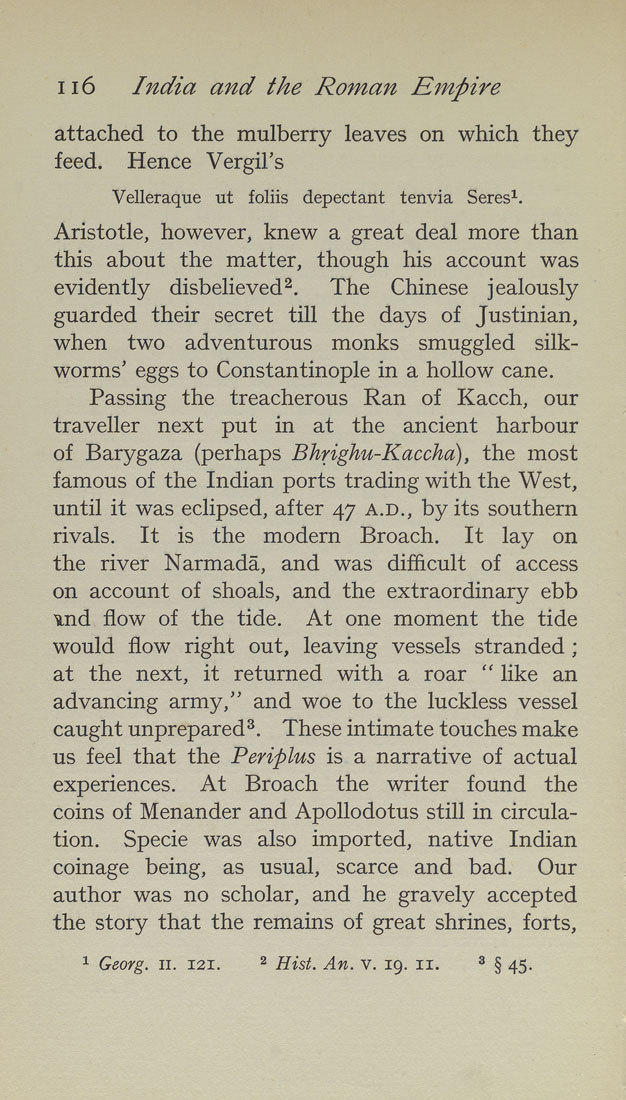II6 India and the Roman Empire
attached to the mulberry leaves on which they
feed. Hence Vergil's
Velleraque ut foliis depectant tenvia Seres^.
Aristotle, however, knew a great deal more than
this about the matter, though his account was
evidently disbelieved^. The Chinese jealously
guarded their secret till the days of Justinian,
when two adventurous monks smuggled silk¬
worms' eggs to Constantinople in a hollow cane.
Passing the treacherous Ran of Kacch, our
traveller next put in at the ancient harbour
of Barygaza (perhaps Bhrighu-Kaccha), the most
famous of the Indian ports trading with the West,
until it was eclipsed, after 47 a.d., by its southern
rivals. It is the modern Broach. It lay on
the river Narmada, and was difficult of access
on account of shoals, and the extraordinary ebb
und flow of the tide. At one moment the tide
would flow right out, leaving vessels stranded ;
at the next, it returned with a roar " like an
advancing army," and woe to the luckless vessel
caught unprepared^. These intimate touches make
us feel that the Periplus is a narrative of actual
experiences. At Broach the writer found the
coins of Menander and ApoUodotus still in circula¬
tion. Specie was also imported, native Indian
coinage being, as usual, scarce and bad. Our
author was no scholar, and he gravely accepted
the story that the remains of great shrines, forts,
1 Georg. II. 121. 2 Hist. An. v. 19. 11. ^ § 45.
|








